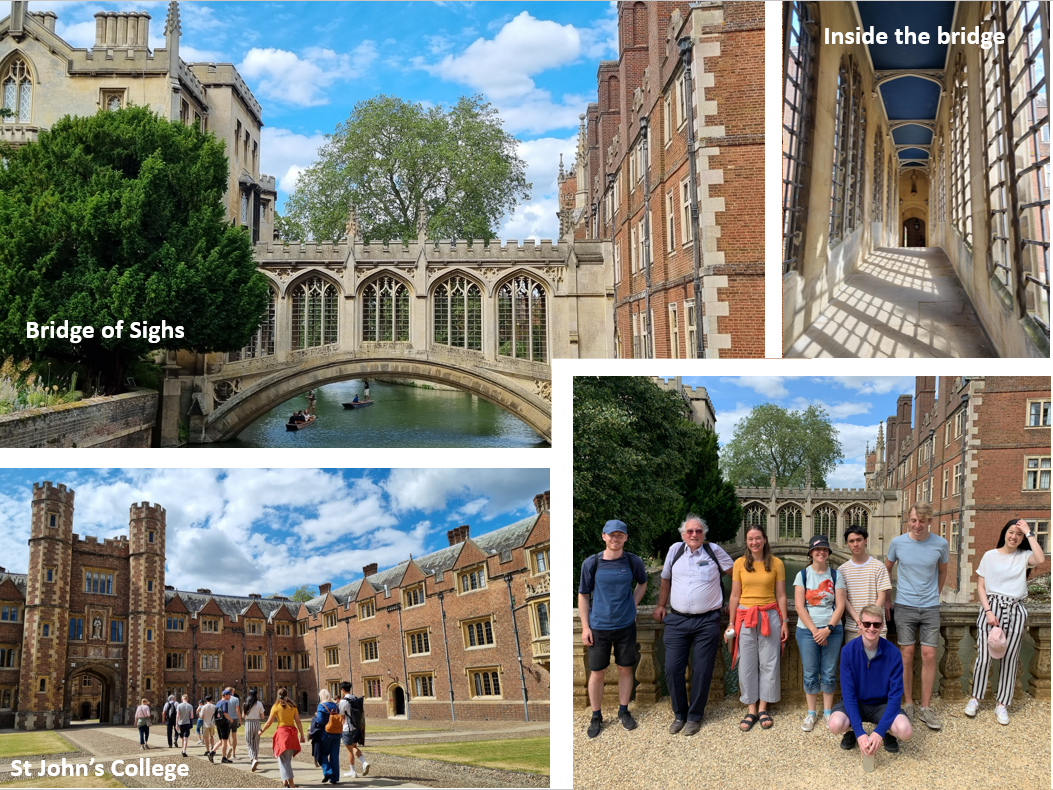
Submitted by Paula Block on Tue, 27/06/2023 - 11:13
"Bridges define places, we are able to recognise places from bridges be it Tower Bridge in London or the Golden Gate Bridge in San Francisco. So why are bridges important to Cambridge? It’s in the name! Cambridge is defined by its bridges."
- Professor Chris Burgoyne
Chris Burgoyne, Emeritus Professor in Structural Engineering, gave a fascinating talk about engineering the balancing forces that help a bridge stay up. The talk also entailed both historical facts of Cambridge as well as the engineering theory how the bridges across the River Cam were built. Chris regaled the class on how roads were built in the Fens in Roman times and even hinted of hidden treasure. It seems King John in the 1300s was travelling from Kings Lynn with his treasury in a cart which fell into the bog and is hidden there to this day. He explained just as the Severn Bridge is a major crossing to Wales saving travellers over a 100 miles and travelling time, Cambridge, being the lowest bridging point, became the Severn Bridge of it’s day, forming a major causeway of roads around the Fens in marshland deemed too wet to walk on, too dry to swim in.
Back in Roman times, the River Cam used to be a commercial river. Pavements were built on the bottom of the Cam so horses could walk on them as barges were towed by horses. Even today, while punting, you could hit pavement if you pushed the pole across certain parts of the river.
The talk then moved to the engineering and technical aspects of building bridges, “As hangs the flexible line, so but inverted will stand the rigid arch” Robert Hooke 1635 – 1703. Chris explains the line of thrust of arched bridges and how the principles of equilibrium, compatibility and constitutive relations used in Plasticity Theory are used to safely predict collapse loads when designing a structure like a bridge. Plastic Theory was originally developed by Baron John Baker, who was Head of Engineering at Cambridge University. Chris then highlighted various bridges in the UK to illustrate the changes in engineering and materials that have allowed bridge design to evolve. The talk ended with Chris leading a tour of 5 iconic bridges in picturesque Cambridge.
- Mathematical Bridge at Queens College. Roman bridges were traditionally built of timber and this distinctive curved wooden structure designed by William Etheridge was last rebuilt in 1905. It’s arrangement of straight timbers efficiently arranged in a tangent and radial trussing structure lends itself to the elegant arch of the bridge.
- Clare Bridge, the oldest surviving bridge in Cambridge, is a stone bridge that connects the Old Court of Clare College to Memorial Court. It is decorated with 14 spheres and has one incomplete sphere with a missing wedge which is a subject of many myths and fables. Legend has it that builder Grumbold was not properly recompense for his work and removed a wedge of a sphere as part of his wage. It offers beautiful views of the Backs or the rear facades of the riverside colleges
- Garret Hostel Bridge at Trinity College, a picturesque footbridge with a distinctive white structure was built with concrete set around pre-stressed steel cables. It is one of the first post-tensioned concrete bridges in the UK and offers stunning views of the River Cam and the colleges of King’s, Trinity and St. John’s.
- Bridge of Sighs, a prominent stone bridge at St John's College, popular with tourists and locals alike, is the only enclosed bridge in Cambridge with an arched walkway built in Victorian Gothic style. It is named after the Bridge of Sighs in Venice and offers punters and tourists similar romantic surroundings when they glide under its architecturally enchanting arches.
- Magdalene Bridge, a busy road bridge with vehicular and pedestrian traffic which spans the River Cam connects the city centre to Magdalene College. In Roman times, as the only gateway across the River Cam into Cambridge, Magdalene Bridge was part of a strategically important trading route and was central to the commercialisation of Cambridge town.
Many thanks to Professor Chris Burgoyne who on this stunningly beautiful and sunny summers day, led a tour of these 5 defining bridges and opened our eyes to the enduring engineering feats of construction in Roman times and beyond which led to these time-honoured bridges, namesake for Cambridge city.
Update, January 2024. Sadly Professor Chris Burgoyne has gone across the bridge we all must cross one day. Yet his teachings about how those iconic bridges were built in Cambridge all those years ago will remain to inspire the next generations of Civil Engineers at FIBE2 CDT.
In Memory of Professor Chris Burgoyne.



